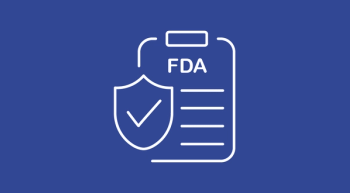
Frontline Treatment Decisions in ALK+ NSCLC
Panelists discuss how treatment selection between lorlatinib and alectinib for ALK-positive non–small cell lung cancer (NSCLC) should consider both efficacy data favoring lorlatinib and patient-specific factors such as neuropsychiatric history or cardiovascular comorbidities that might favor alectinib.
Episodes in this series

The treatment landscape for ALK-positive advanced NSCLC has been revolutionized by the availability of highly effective second- and third-generation ALK inhibitors, each offering distinct efficacy and toxicity profiles that influence treatment selection. Alectinib has historically been favored as a potent second-generation ALK inhibitor with excellent central nervous system (CNS) penetration and manageable adverse effects, making it a standard frontline choice before the emergence of lorlatinib data. However, the mature results from the CROWN trial have fundamentally shifted treatment paradigms by demonstrating unprecedented efficacy outcomes with lorlatinib.
The CROWN trial’s 5-year follow-up data revealed remarkable durability with lorlatinib, showing 60% of patients remaining progression free at 5 years compared with only 8% with crizotinib. This represents an unprecedented achievement in targeted therapy for lung cancer, with survival outcomes approaching those seen in potentially curable diseases. Despite these impressive efficacy results, treatment selection must consider individual patient factors, particularly the neuropsychiatric adverse effects associated with lorlatinib that may significantly affect quality of life in certain patients.
Patient-specific considerations that influence ALK inhibitor selection include baseline neurological or psychiatric conditions that may be exacerbated by lorlatinib’s CNS penetration, cardiovascular comorbidities that may be affected by lorlatinib’s lipid effects, and individual patient preferences regarding adverse effect tolerability vs maximal efficacy. For patients with difficult-to-control hyperlipidemia or cardiovascular disease, alectinib may be preferred despite its lower efficacy profile. The treatment decision ultimately requires balancing the overwhelming efficacy benefit of lorlatinib against its more complex adverse effect profile, with most practitioners favoring lorlatinib for younger, fit patients with strong motivation for maximal disease control while reserving alectinib for patients with specific contraindications or strong preferences for tolerability over maximal efficacy.
Newsletter
Knowledge is power. Don’t miss the most recent breakthroughs in cancer care.
















































































